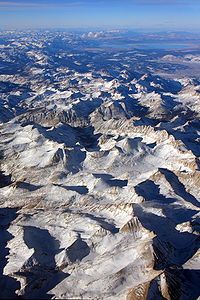
Photo from wikipedia
Abstract The composition of vegetation on a slope frequently changes substantially owing to the different micro‐environments of various slope aspects. To understand how the slope aspect affects the vegetation changes,… Click to show full abstract
Abstract The composition of vegetation on a slope frequently changes substantially owing to the different micro‐environments of various slope aspects. To understand how the slope aspect affects the vegetation changes, we examined the variations in leaf mass per area (LMA) and leaf size (LS) within and among populations for 66 species from 14 plots with a variety of slope aspects in a subalpine meadow. LMA is a leaf economic trait that is tightly correlated with plant physiological traits, while the LS shows a tight correlation with leaf temperature, indicating the strategy of plants to self‐adjust in different thermal and hydraulic conditions. In this study, we compared the two leaf traits between slope aspects and between functional types and explored their correlation with soil variables and heat load. Our results showed that high‐LMA, small‐leaved species were favored in south‐facing slopes, while the reverse was true in north‐facing areas. In detail, small dense‐leaved graminoids dominated the south slopes, while large thin‐leaved forbs dominated the north slopes. Soil moisture and the availability of soil P were the two most important soil factors that related to both LMA and LS, and heat load also contributed substantially. Moreover, we disentangled the relative importance of intraspecific trait variation and species turnover in the trait variation among plots and found that the intraspecific variation contributed 98% and 56% to LMA and LS variation among communities, respectively, implying a large contribution of intraspecific trait plasticity. These results indicate that LMA and LS are two essential leaf traits that affect the adaptation or acclimation of plants underlying the vegetation composition changes in different slope aspects in the subalpine meadow.
Journal Title: Ecology and Evolution
Year Published: 2021
Link to full text (if available)
Share on Social Media: Sign Up to like & get
recommendations!